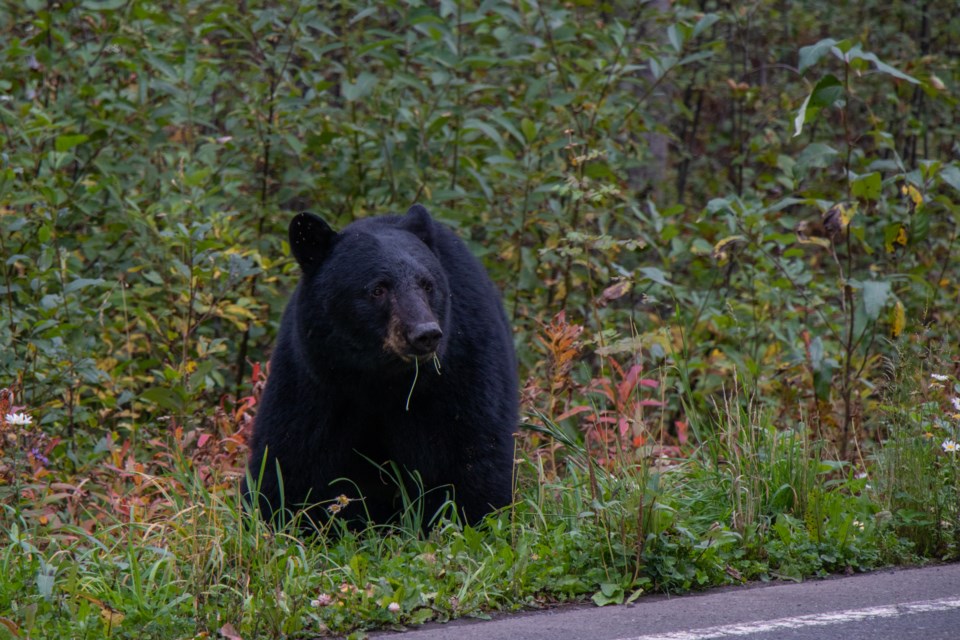British Columbia doesn’t have a bear problem. Instead, we seem to have a people problem, or at the very least, a bear awareness issue. In a province with an estimated black bear population between 120,000 – 160,000, we’ve heard for years that a fed bear is a dead bear. So why are so many still being destroyed?
As most of the province’s bears prepare to nestle down for a long winter nap, the B.C. Conservation Officer Service (COS) laments that despite ongoing educational programs, the number of black bears killed across B.C. increased dramatically this year.
“It’s frustrating for us, as we’ve been trying to get the message out regarding attractants for a long time,” says Chris Doyle, deputy chief of the Conservation Officer Service.
Between April 1st and the end of October, Doyle’s office counted 562 bear deaths – compared to 371 in all last year. While the COS was directly involved in 480 of those fatalities, Doyle says his officers had little choice in the matter:
“It certainly is not something that any conservation officer enjoys having to do…particularly when the killing of the animal is the result of human negligence.”
That negligence is a constant weight on the shoulders of WildSafeBC Provincial Coordinator Vanessa Isnardy, whose office is focused on preventing human-bear conflicts.
“When bears have been exposed to human sources of food, they tend to linger in our communities and seek out more sources of food,” warns Isnardy.
Regrettably, only eight B.C. communities have earned “Bear Smart” designation.
While statistics suggest humans are rarely attacked by bears, WildSafeBC cautions that any wild creature is unpredictable, especially while searching for its next meal. In extreme cases, hungry bears have been known to break into homes, giving COS no choice but to kill the animal.
Regrettably, only eight B.C. communities have earned “Bear Smart” designation according to WildSafeBC: New Denver; the District of Squamish; Whistler; Naramata; Kamloops; Port Alberni; Lions Bay; and Coquitlam.
Designed and managed by the Ministry of Forests Lands and Natural Resource operations in partnership with the British Columbia Conservation Foundation and the Union of British Columbia Municipalities, the Bear Smart Community program describes itself as a voluntary, preventative conservation measure that encourages communities, businesses and individuals to work together.
The strategy is to address the root causes of human-bear conflicts, reducing the risks to human safety and private property – and the number of bears that must be destroyed each year.
“To be bear smart, you need to continue to be educated, continue to be vigilant, and continue to protect the animals.”
For example, Isnardy points to fruit trees as a powerful lure, and contends that property owners are faced with a difficult decision:
“It’s making sure we pick that fruit, and if we can’t, maybe it’s time to replace that tree.”
Echoing the importance of education, the mayor of Whistler is adamant that being bear smart has made a huge difference. With at least 50 black bears in his community, Jack Crompton is quick to point out that one only bear had to be destroyed this year:
“It’s not difficult, but it is a lot of work…and it’s important work.”
Faced with the challenge of educating both residents and tourists, Crompton stresses that being bear smart is a never-ending process:
“To be bear smart, you need to continue to be educated, continue to be vigilant, and continue to protect the animals.”
For Vanessa Isnardy and her WildSafeBC colleagues, protecting and preserving wildlife is far more than a job, but a passion. The conundrum she faces is getting her message to stick, and get people to change their behavior. Isnardy’s solution is a process:
“I would like to think people do not want to cause the death of a bear unnecessarily…they just need support, education, and help to get across that line.”
As always, I welcome your comments and criticism on Twitter @kammornanchor and email [email protected].
Bob Price is a veteran B.C. broadcaster who anchored the morning news on CHNL radio in Kamloops for the past 30 years. Bob is also a past Webster Award winner whose previous stops included Vancouver and Calgary.
SWIM ON:
- The Right Stuff: Bob Price on the men and women who fight BC wildfires from the cockpit.
- Jordan Bateman on the too-easy solution: focusing on money laundering lets everyone else off the hook for skyrocketing property prices.
- Canada's rich tradition of war art is exemplified in BC's EJ Hughes, who was not only Canada's most prolific war artist, but someone who painted across BC.



